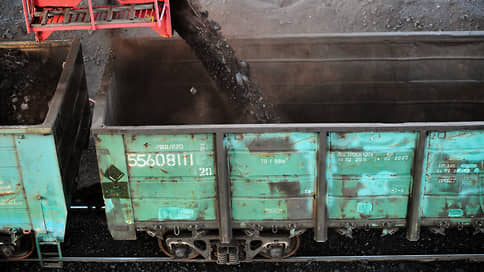Export prices for Russian coal are falling at the height of the heating season
[ad_1]

Prices for Russian coal are creeping down, despite the height of the heating season in the Northern Hemisphere. They are under pressure from high coal reserves in China and cheaper gas on the world market. The export of thermal coal from Kuzbass to the west is already becoming unprofitable. However, Russian coal companies may respond to this not by reducing, but by increasing production in order to reduce unit costs. According to experts, the situation on the market could be changed by a hot summer, as well as the possible consequences of an escalation in the Red Sea for coal supplies.
At the height of the heating season, export prices for Russian thermal coal are declining both in the eastern and western directions. According to the Price Index Center, 6000 kcal coal fell in price by 7.4% over the week and costs $101 per ton on a FOB Far East basis, 5500 kcal coal fell in price by 7.1%, to $92 per ton, 5000 kcal coal – on 8.9%, up to $77. Prices in the western export direction are also decreasing: 6000 kcal coal fell in price on the FOB Baltic basis by 4.7%, to $71 per ton, on the FOB Taman basis – by 4.6%, to $83 per ton.
Export netbacks in the eastern direction for Kuzbass coal are $10–34, depending on the calorific value. In the southern and western directions, netbacks reached minimum values of $7–8, which is lower than the cost of production.
Metallurgical coal prices are also falling. Thus, Kuzbass grade Z coal on the FOB Far East basis fell by 8.4%, to $163 per ton, and low-volatile pulverized coal fuel – by 12.8%, to $136 per ton.
The external environment for Russian coal companies is deteriorating in January. First, gas prices are falling in all major markets amid forecasts for milder weather and high storage levels. Secondly, there are high coal reserves in warehouses in China. Finally, the import duty on coal was restored in China, which will affect Russian and Mongolian exporters, which reduced netbacks for Russian suppliers.
However, coal companies, even in low market conditions, are not ready to reduce production. Curtailing production and then trying to resume it is much more expensive than working at a minus for some time, while there is a margin of safety, an interlocutor close to the coal company tells Kommersant. If production is greatly reduced, there is no guarantee that it will be possible to return to previous levels, he emphasizes. “Therefore, the effect may be the opposite – in a low-price environment, companies can maintain high production levels in order to reduce unit costs per ton,” he says.
In 2023, coal production and exports in Russia remained at the level of the year before last – 440 million tons and 220 million tons, respectively. Russian Energy Minister Nikolai Shulginov said at the end of December that it is planned to maintain these figures for 2024. However, company profits are declining: according to Rosstat, the industry’s net profit in January-October 2023 amounted to 403.2 billion rubles, having decreased by 49% year-on-year due to a decline in export prices.
Coal exports through southern and Baltic ports already have negative margins, says independent industrial expert Maxim Shaposhnikov. At the same time, metallurgical coal prices are declining. “If this situation lasts more than two months, then there is a risk of a decline in production this year, since it will not be possible to supply all volumes in the direction of the Far East,” says the expert. However, unfavorable forecasts have a chance of not coming true. The conflict in the Red Sea is gradually growing, the expert says, which could affect coal supplies to Europe. In addition, drought due to El Niño is expected in the summer, which will reduce hydroelectric output and increase demand for electricity for air conditioning, especially in large Asian markets.
[ad_2]
Source link





